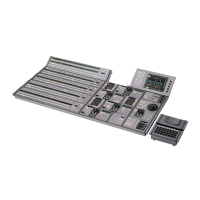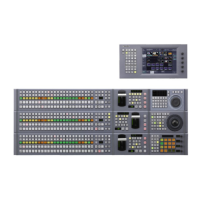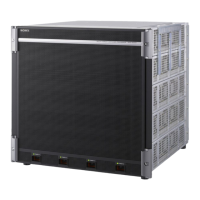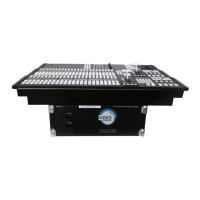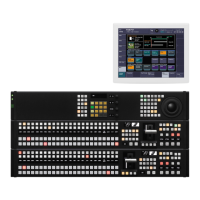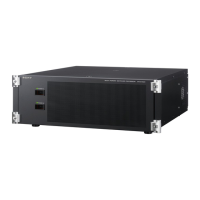Creating User Programmable DME Patterns 197
Creating User
Programmable DME
Patterns
With a user programmable DME, you can use DME effects
created through the use of keyframes for a transition on the
switcher system.
Note the following points when creating a keyframe effect
for use as a user programmable DME pattern.
Register numbers and pattern numbers
When saving a keyframe effect as a user programmable
DME pattern, specify the register number that corresponds
to the pattern number as shown in the following table.
For details of registers and keyframe effects, see Chapter
13 “Keyframe Effects” (Volume 2), respectively.
Notes
When the signal format is 1080P, three-channel mode
cannot be used.
Keyframe effects in the global channel
When the effect with the same number as the reference
channel is present on the DME global (GLBL) channel,
executing the user programmable DME will also execute
the effect on the global channel simultaneously.
When executing a user programmable DME, take note of
whether the effect is present on the global channel.
The following transition modes are available.
Slide, Split, Door,
Page turn, Page
roll, Squeeze,
Mirror, Sphere,
Character Trail,
Wave, Ripple, 2D
Trans, 3D Trans,
Sparkle, Split
Slide
Flip Tumble,
Mosaic, Defocus
Two-channel
picture-in-picture
a)
Transition according to DME wipe patterns 1202, 1203, or 1204
b)
Transition according to DME wipe pattern 1201
c)
Transition according to DME wipe pattern 1251
For details, see “Overview” (page 183).
Notes
For the following group of effects available in two-channel
mode, no user programmable DME wipe patterns can be
created.
Page turn, Page roll, Brick
Notes on creating keyframe effects
When creating a keyframe effect to be used as a user
programmable DME pattern, note the following,
depending on the transition mode used.
Notes on single transition mode (one-channel
User Programmable DME Transition
Mode
To create a user programmable DME, it is necessary to set
the transition mode (the way in which the effect moves).
To set the transition mode, use the Key Frame >DME User
PGM menu.
For details of the operating procedures, see “Transition
Mode Settings for User Programmable DME” in Chapter
13 (Volume 2).
mode)
•
Either create the first keyframe image outside the screen
area, or set the image size to zero so that it cannot be seen
within the screen.
•
Create the last keyframe to be a full-size image.
•
In the <Transition Mode> group of the Key Frame
>DME User PGM menu, select [Single].
Notes on flip tumble (one-channel mode)
•
Create the first keyframe image at full size. In the
<Back> group of the DME >Input/Output >Video/Key
menu, depending on the direction of the rotation you
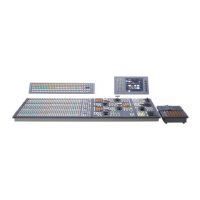
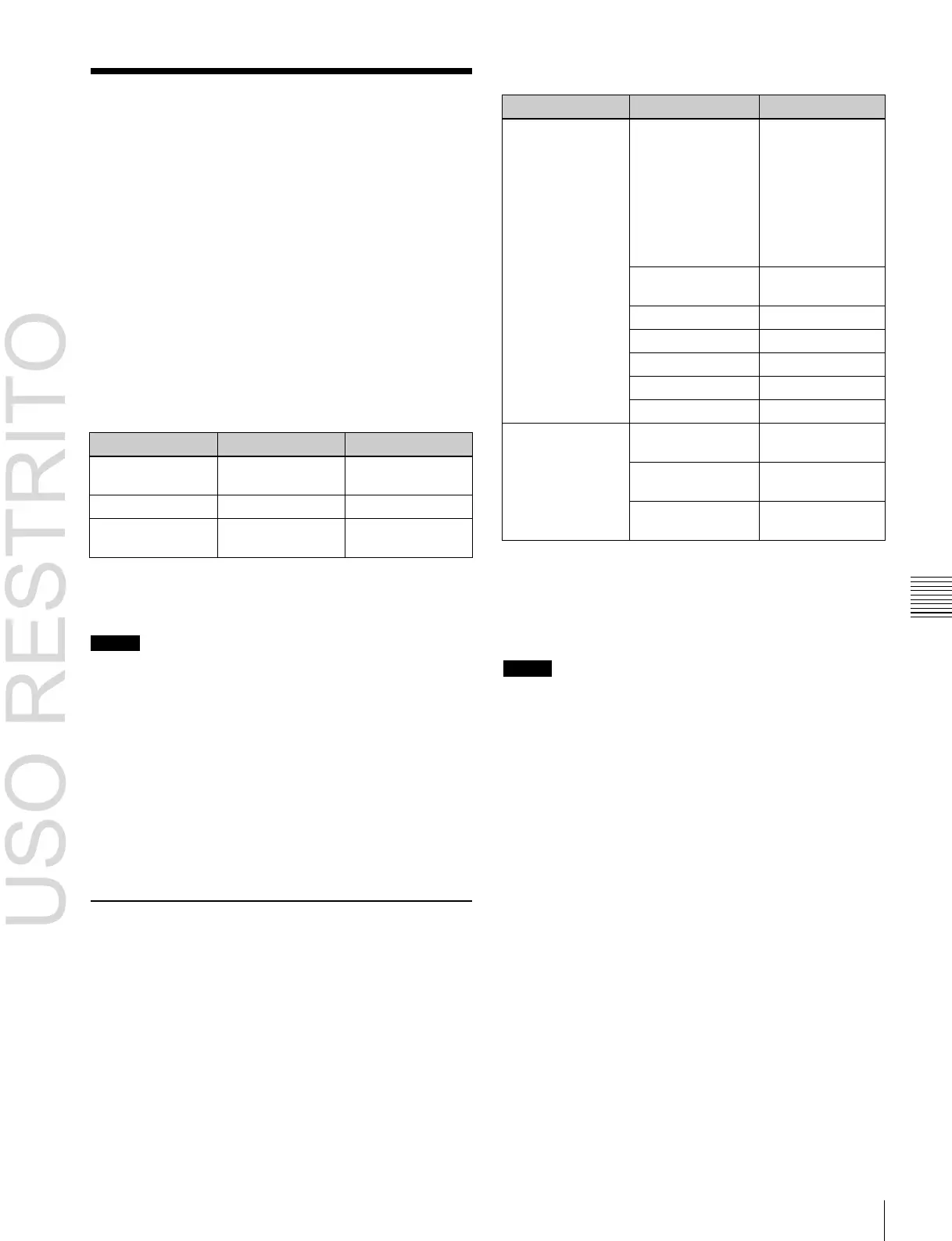